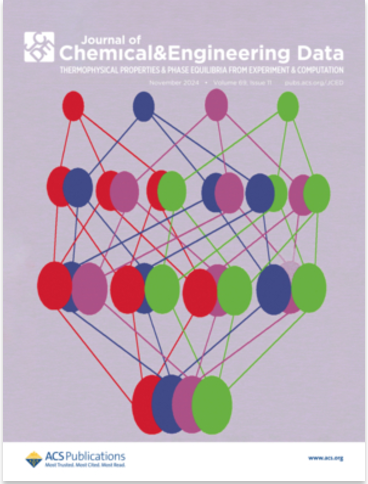Pelvic ultrasound-based deep learning models for accurate diagnosis of ovarian cancer: Retrospective multicenter study.
IF 2.1
3区 工程技术
Q3 CHEMISTRY, MULTIDISCIPLINARY
引用次数: 0
Abstract
5543 Background: Although pelvic ultrasound is useful modality to diagnose ovarian cancer, there is few studies to evaluate the performance of deep learning model. Development of deep learning based on aggregating ultrasound images and clinical information such as age and CA-125 data might be beneficial to differentiated malignancy from benign ovarian cyst. The objective of this study is to build a deep learning model with advanced accuracy of differential diagnosis between malignant and benign lesions of ovary. Methods: Pelvic ultrasound images, information of age and ca-125 level at diagnosis from patients diagnosed with ovarian cancer or benign cyst during 2015-2022 were retrieved. The images were segmented into cystic and solid component and processed data for feature extraction. For convolutional neural network model development, patients were assigned to training dataset (565 patients), validation dataset (76 patients), and test dataset (163 patients). After feature extraction using this convolutional neural network, we also used age and tumor marker to classify these images as either malignant or benign. Using these datasets, we assessed the diagnostic value of the deep learning model. A new AI model to utilize image feature and clinical information together was developed. This model separates feature extractor and classifier from the architecture of conventional AI models, and the classifier receives clinical information data in addition to image information. ResNet50 and DenseNet121 were used in the conventional AI model. Results: In total, 804 patients who had ovarian tumors were included; 446 benign and 358 malignant. When pelvic ultrasound image of ovary was only used, ResNet50 showed AUC of 0.84 and DenseNet121 had AUC of 0.82 for this model to detect ovarian cancer. However, when segmented solid portion image and clinical data was combined with the ovary image, ResNet50 showed AUC of 0.95 and DenseNet121 had AUC of 0.96 for this model to detect ovarian cancer. Using the test data set, ResNet50 and DenseNet121 had sensitivities of 90% and 81%, specificity of 93% and 97%, positive predictive value of 92% and 95%, and negative predictive value of 92% and 86% to detect ovarian cancer, respectively. Conclusions: Binary classification model based on deep learning algorithms using pelvic ultrasound images can distinguish between benign and malignant ovarian tumors accurately. Segmentation of solid portion and clinical information of age and CA-125 at diagnosis combined with the pelvic ultrasound images increased the accuracy of the classification model.基于盆腔超声的深度学习模型用于准确诊断卵巢癌:回顾性多中心研究
5543 背景:虽然盆腔超声是诊断卵巢癌的有效方法,但很少有研究评估深度学习模型的性能。基于聚合超声图像和临床信息(如年龄和 CA-125 数据)的深度学习的发展可能有利于区分恶性和良性卵巢囊肿。本研究的目的是建立一个深度学习模型,提高卵巢恶性和良性病变的鉴别诊断准确率。研究方法检索2015-2022年期间确诊为卵巢癌或良性囊肿患者的盆腔超声图像、诊断时的年龄和ca-125水平信息。将图像分割成囊性和实性部分,并处理数据进行特征提取。为了开发卷积神经网络模型,将患者分配到训练数据集(565 名患者)、验证数据集(76 名患者)和测试数据集(163 名患者)。使用卷积神经网络提取特征后,我们还使用年龄和肿瘤标记物将这些图像分为恶性和良性。利用这些数据集,我们评估了深度学习模型的诊断价值。我们开发了一种新的人工智能模型,将图像特征和临床信息结合起来使用。该模型将特征提取器和分类器从传统人工智能模型的架构中分离出来,分类器除了接收图像信息外,还接收临床信息数据。在传统人工智能模型中使用了 ResNet50 和 DenseNet 121。研究结果共纳入 804 例卵巢肿瘤患者,其中良性肿瘤 446 例,恶性肿瘤 358 例。当仅使用卵巢盆腔超声图像时,ResNet50 的 AUC 为 0.84,DenseNet121 的 AUC 为 0.82。然而,当分割后的实体部分图像和临床数据与卵巢图像相结合时,ResNet50 的 AUC 为 0.95,DenseNet121 的 AUC 为 0.96。使用测试数据集,ResNet50 和 DenseNet121 检测卵巢癌的灵敏度分别为 90% 和 81%,特异性分别为 93% 和 97%,阳性预测值分别为 92% 和 95%,阴性预测值分别为 92% 和 86%。结论基于深度学习算法的二元分类模型使用盆腔超声图像能准确区分良性和恶性卵巢肿瘤。实体部分的分割以及诊断时年龄和 CA-125 的临床信息与盆腔超声图像相结合,提高了分类模型的准确性。
本文章由计算机程序翻译,如有差异,请以英文原文为准。
求助全文
约1分钟内获得全文
求助全文
来源期刊

Journal of Chemical & Engineering Data
工程技术-工程:化工
CiteScore
5.20
自引率
19.20%
发文量
324
审稿时长
2.2 months
期刊介绍:
The Journal of Chemical & Engineering Data is a monthly journal devoted to the publication of data obtained from both experiment and computation, which are viewed as complementary. It is the only American Chemical Society journal primarily concerned with articles containing data on the phase behavior and the physical, thermodynamic, and transport properties of well-defined materials, including complex mixtures of known compositions. While environmental and biological samples are of interest, their compositions must be known and reproducible. As a result, adsorption on natural product materials does not generally fit within the scope of Journal of Chemical & Engineering Data.
 求助内容:
求助内容: 应助结果提醒方式:
应助结果提醒方式:


